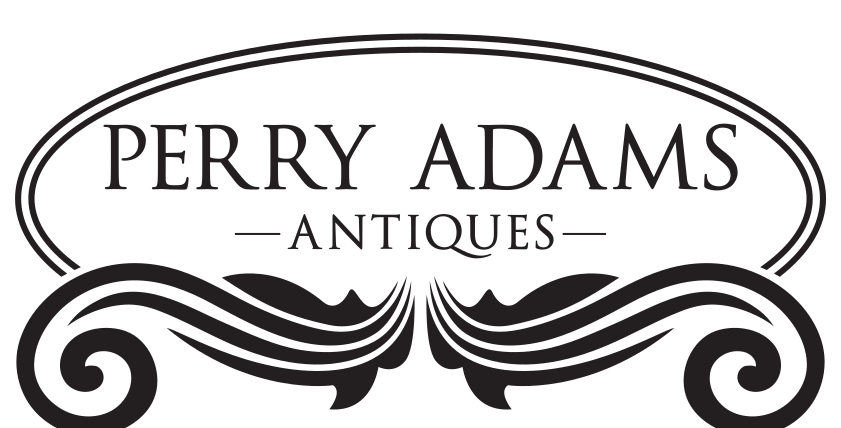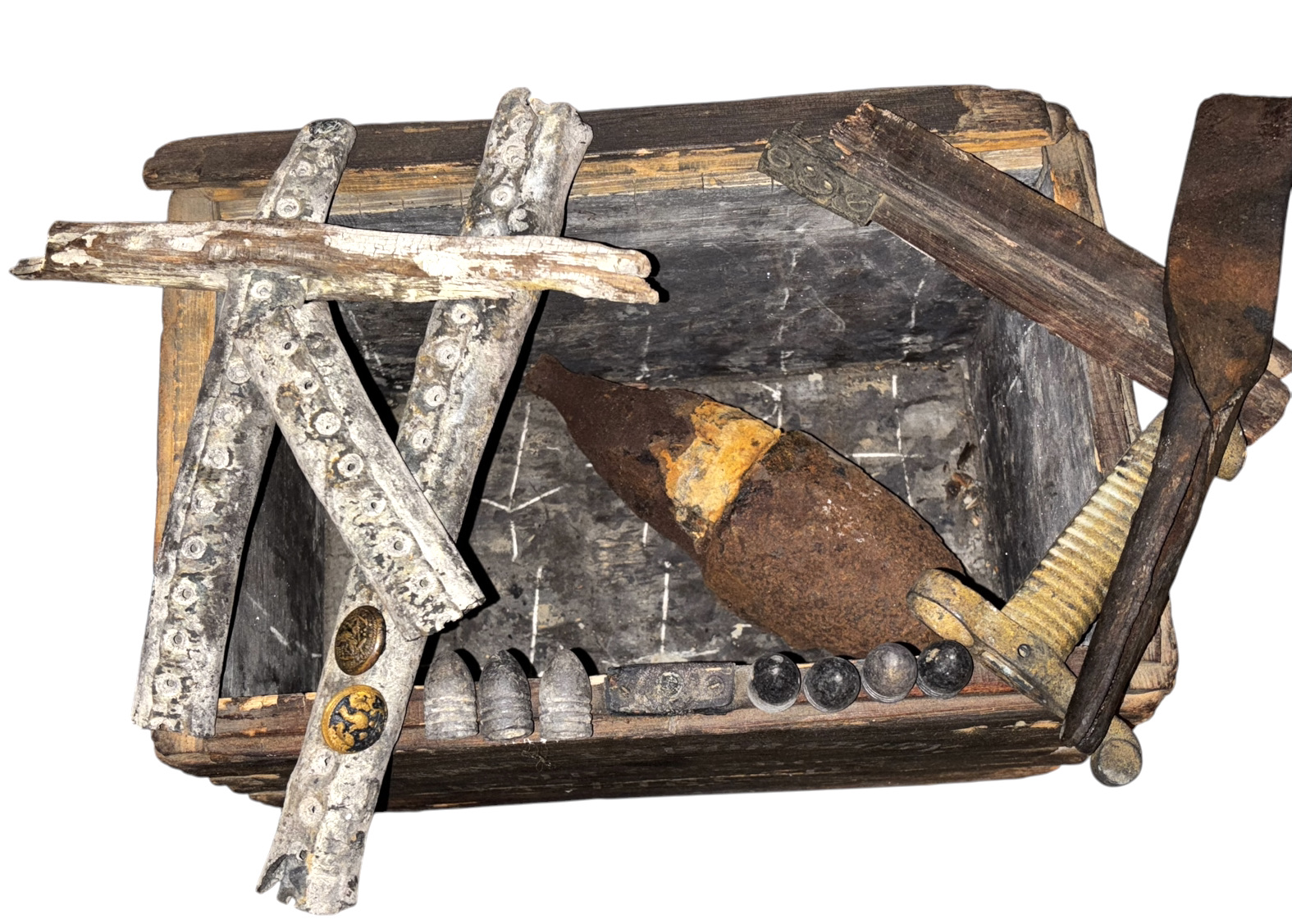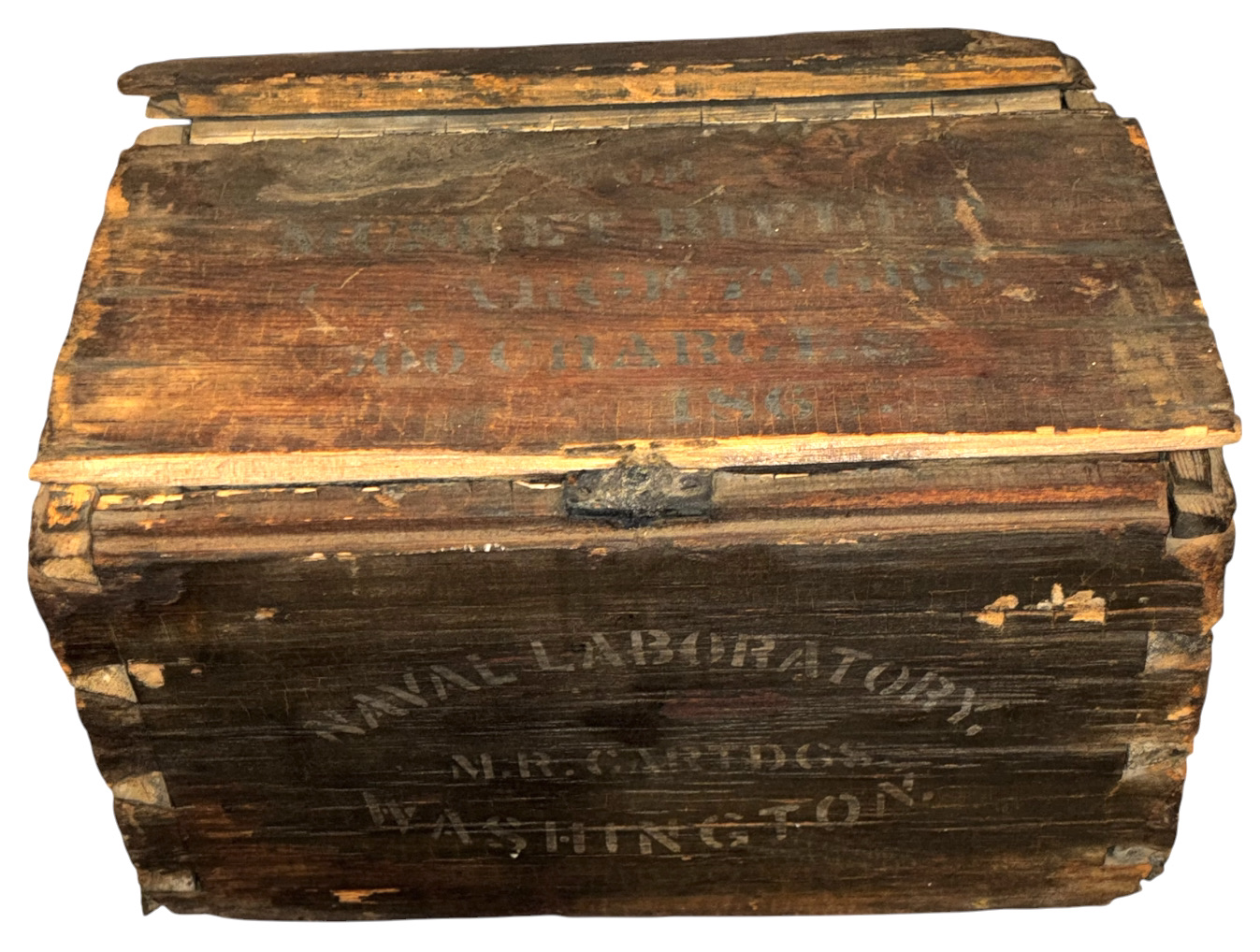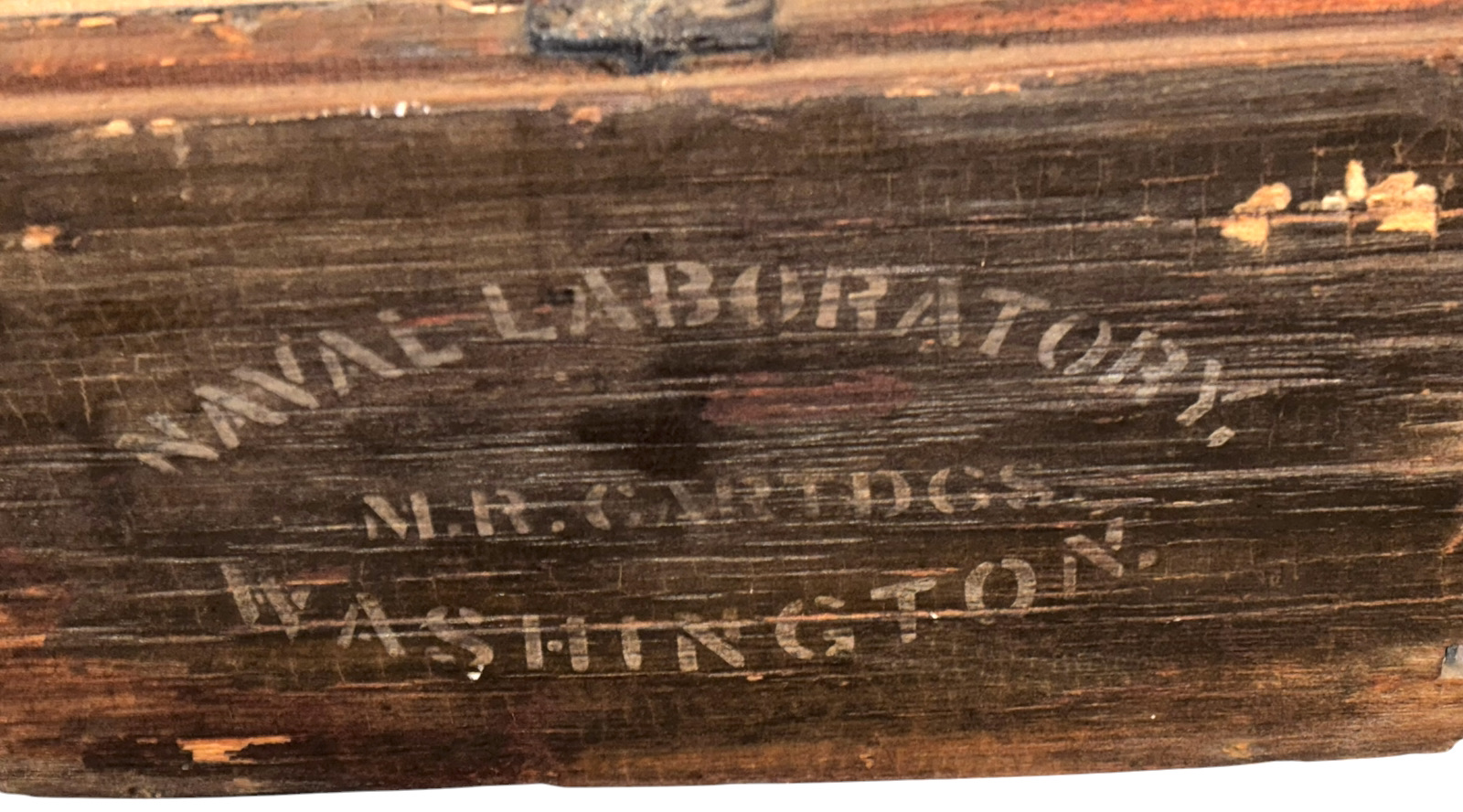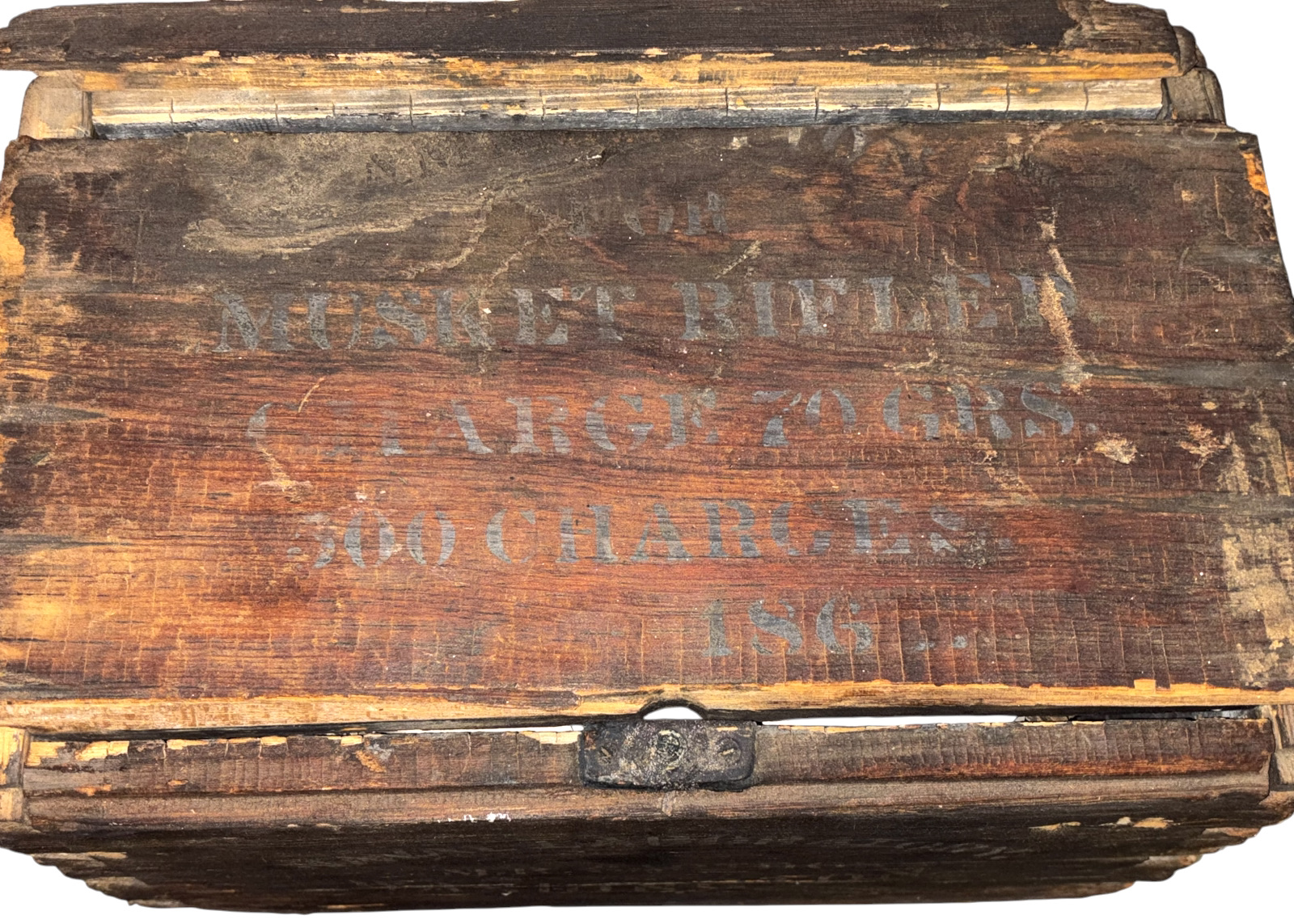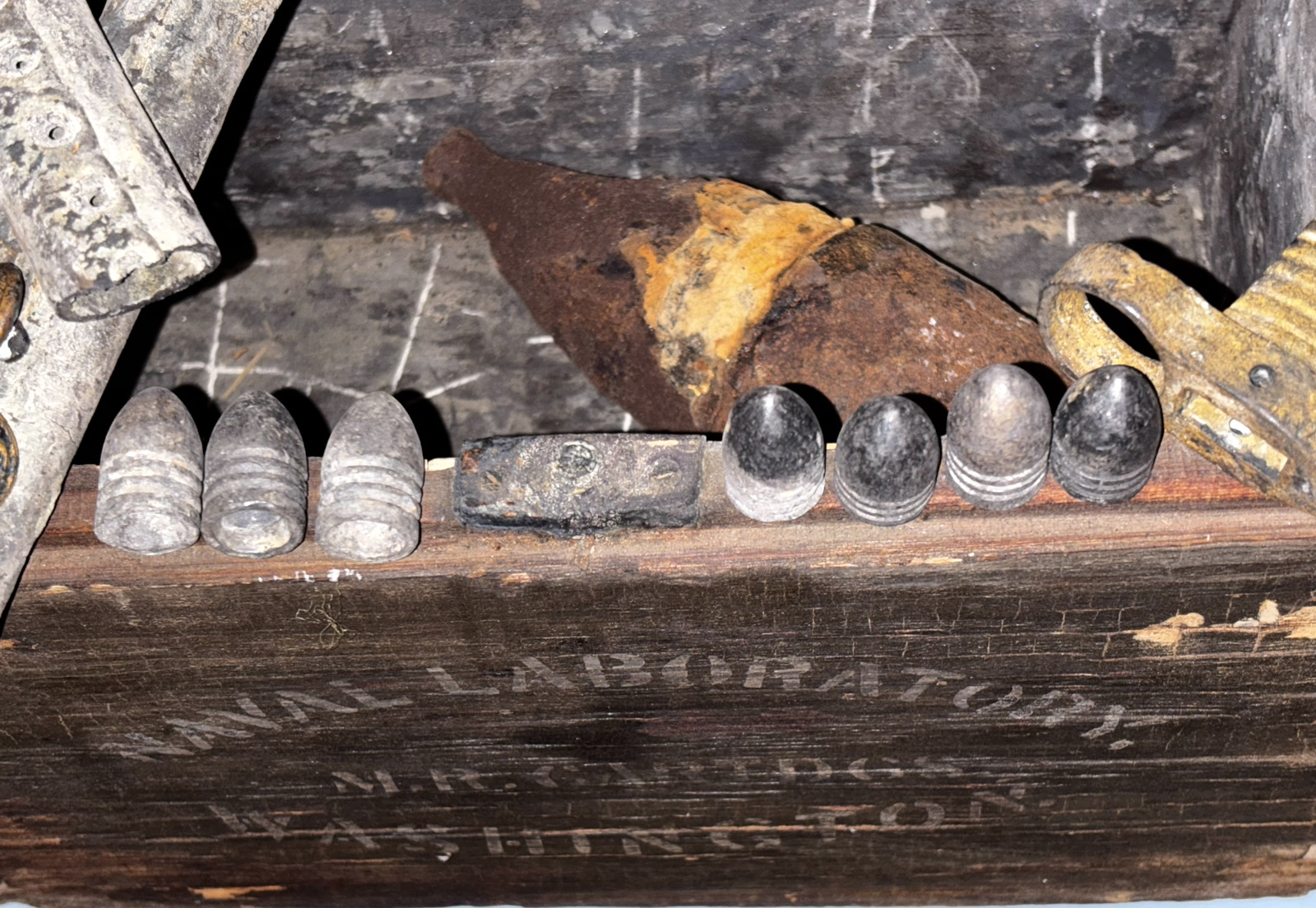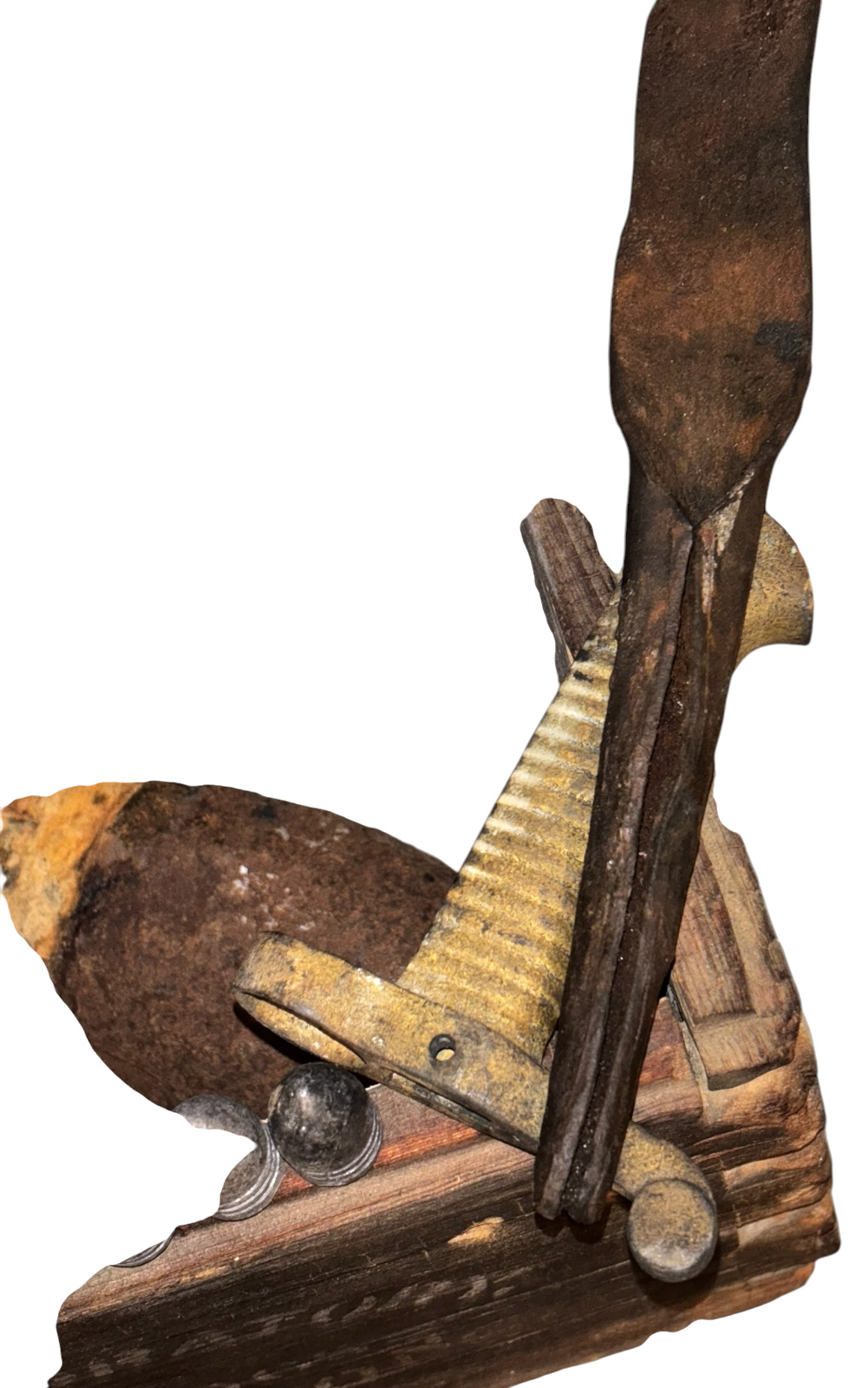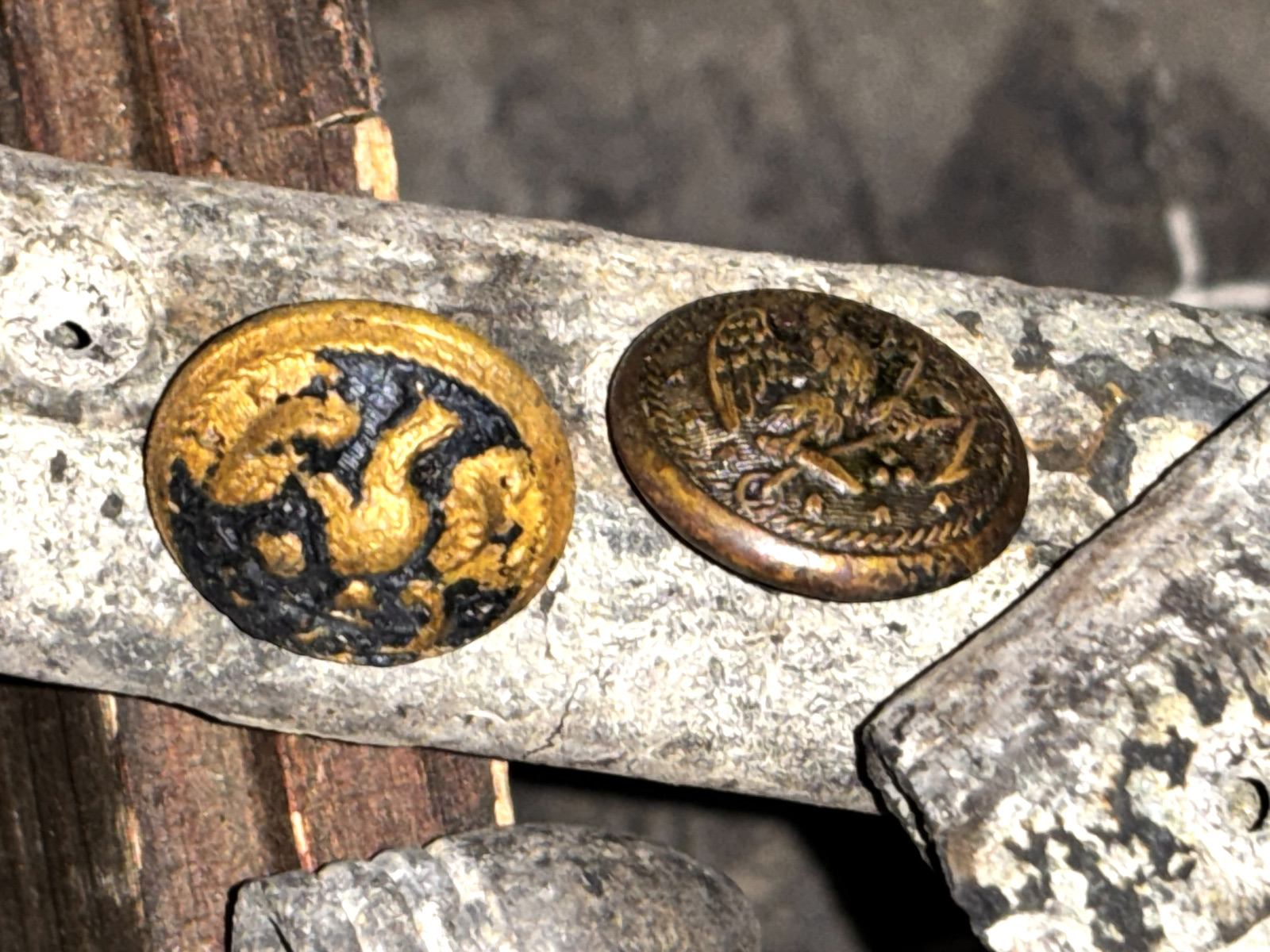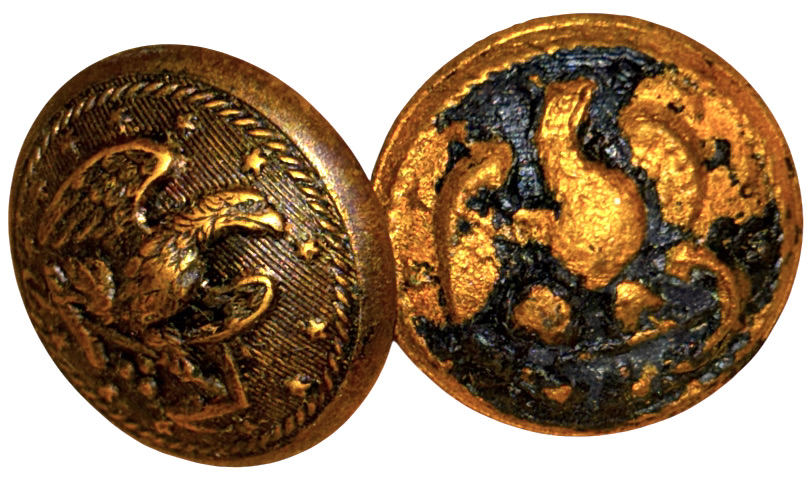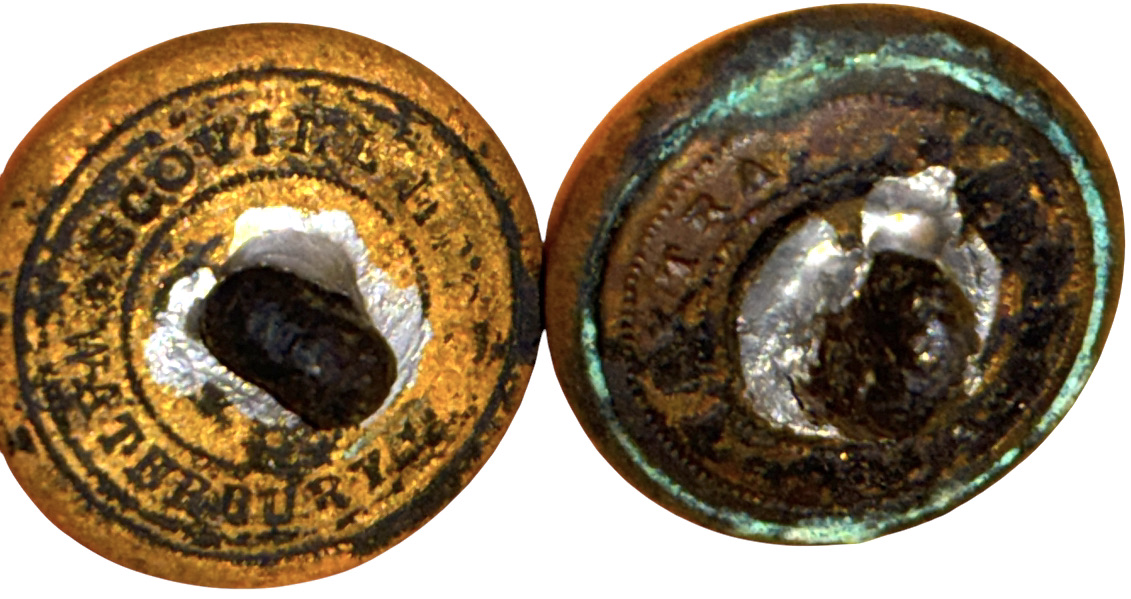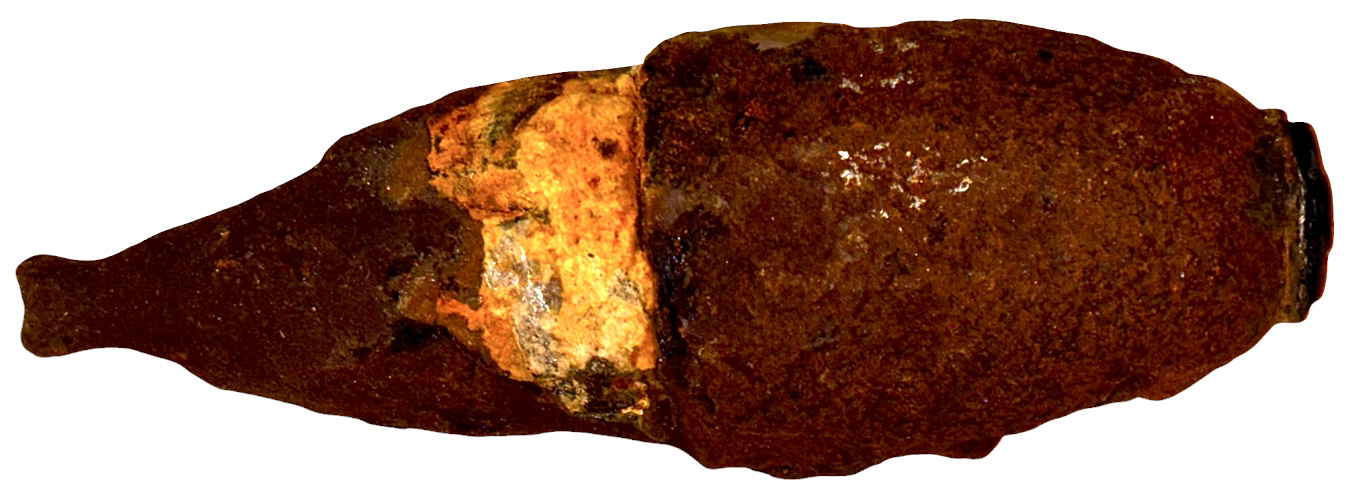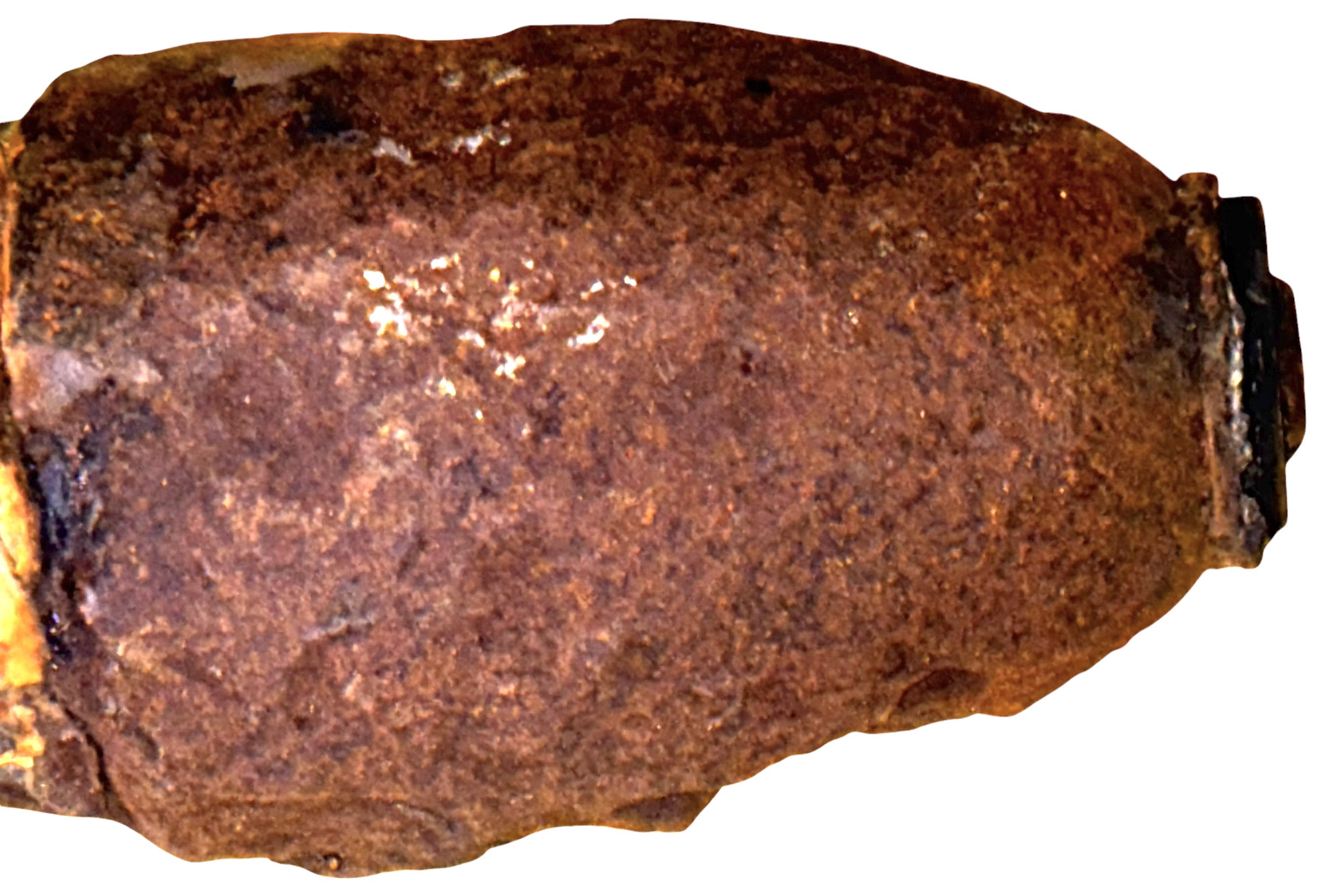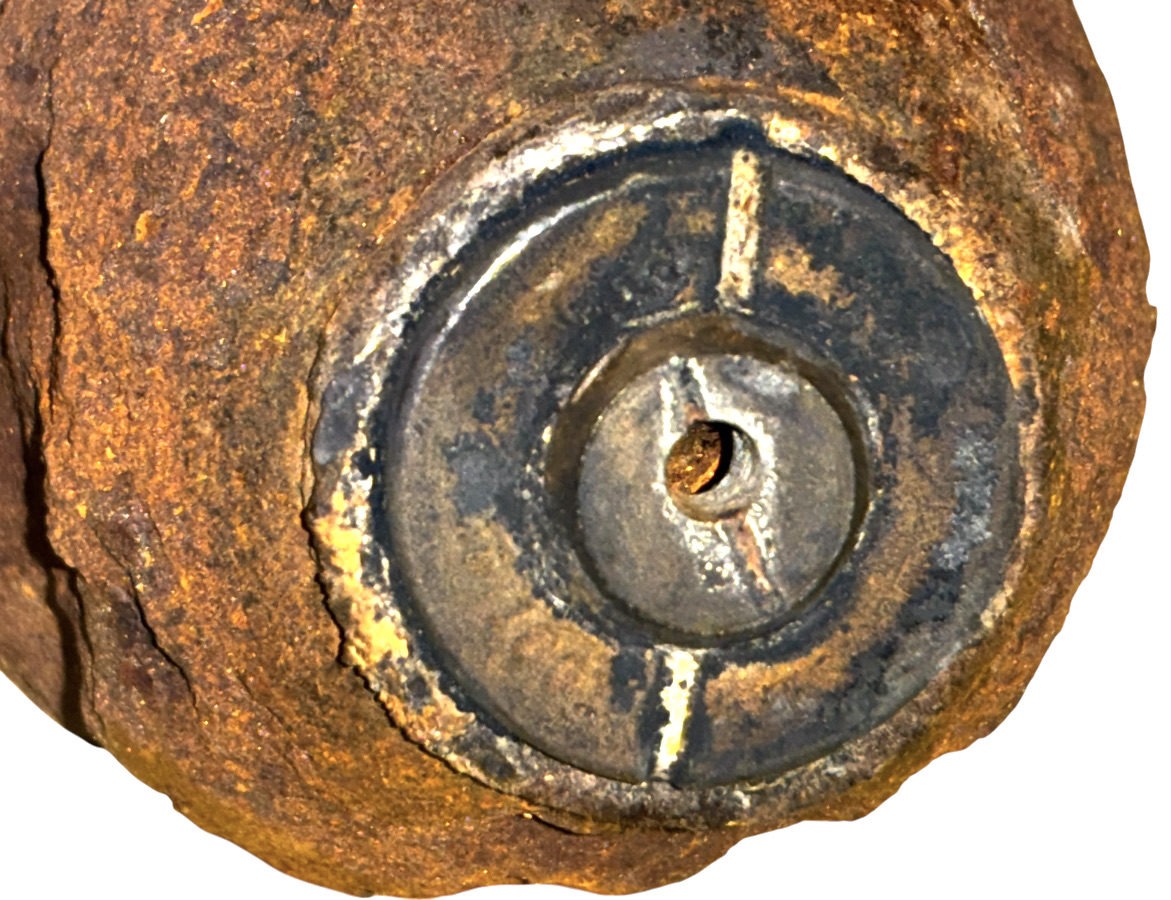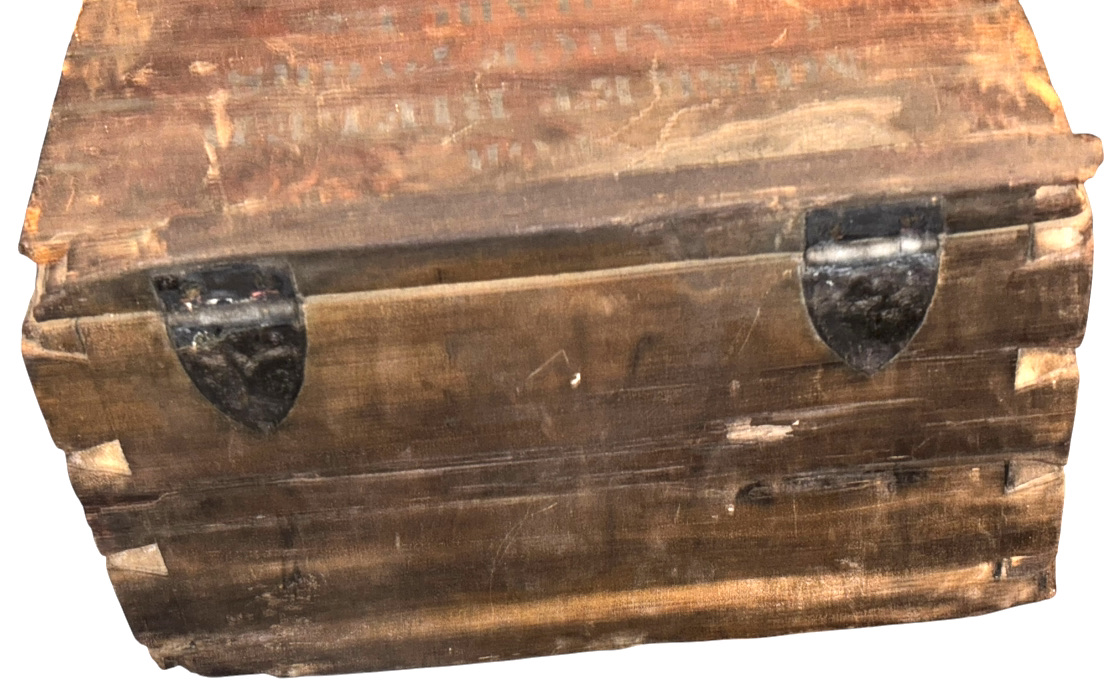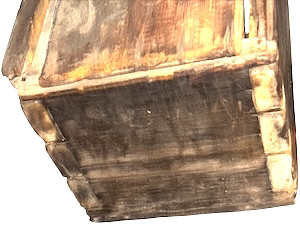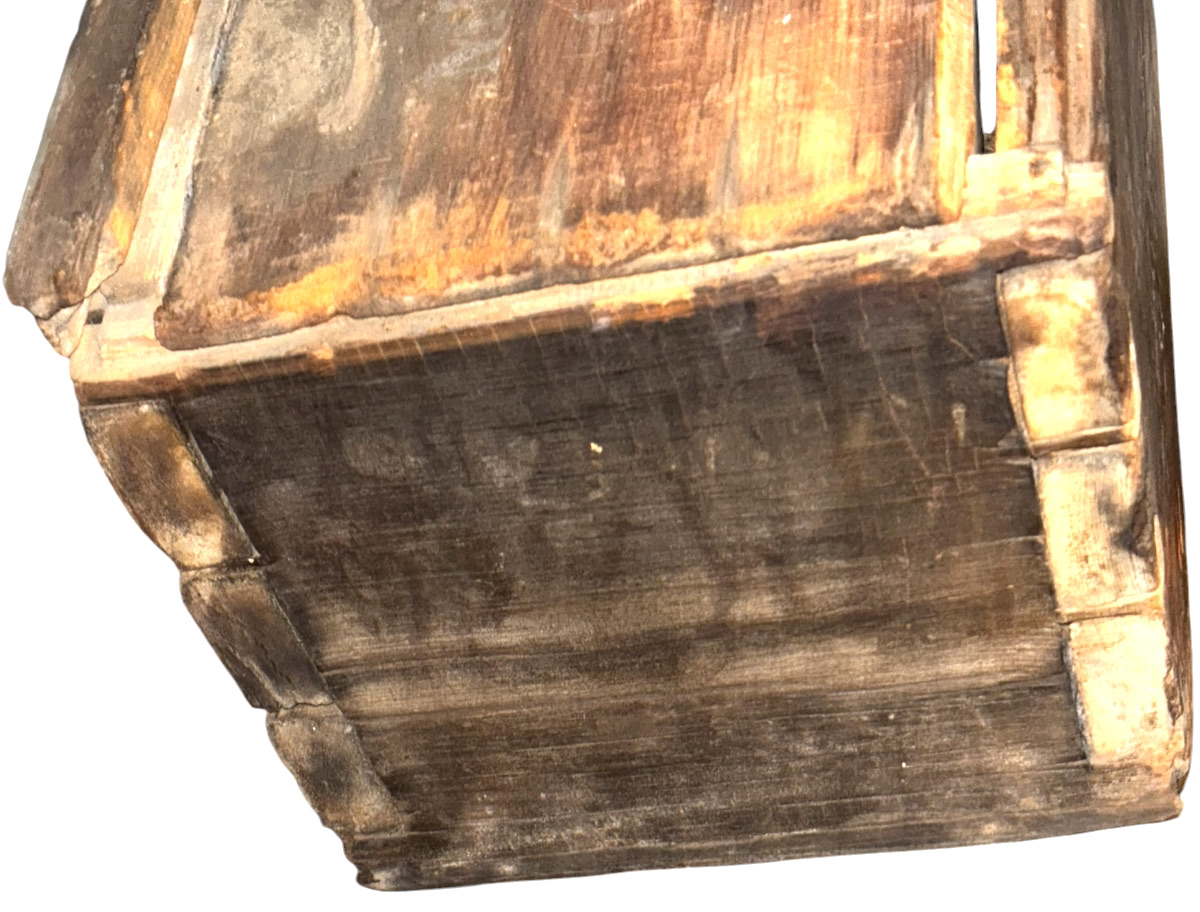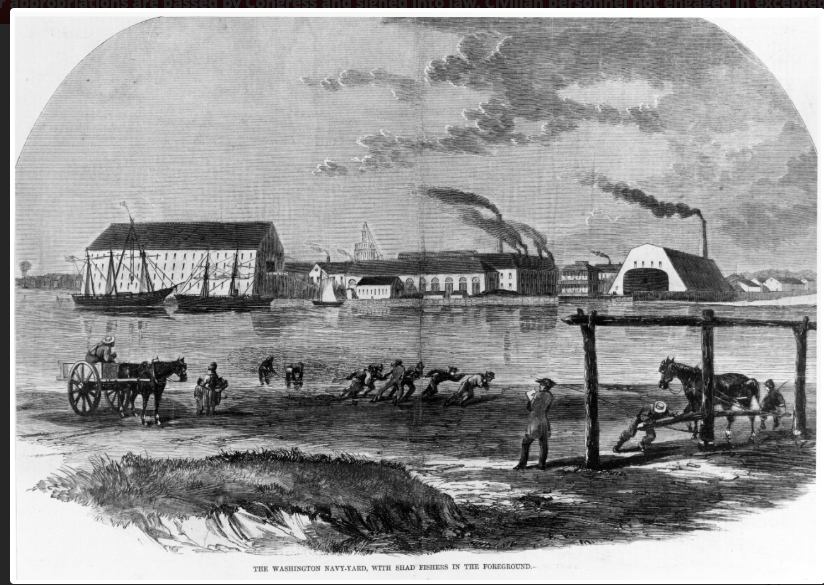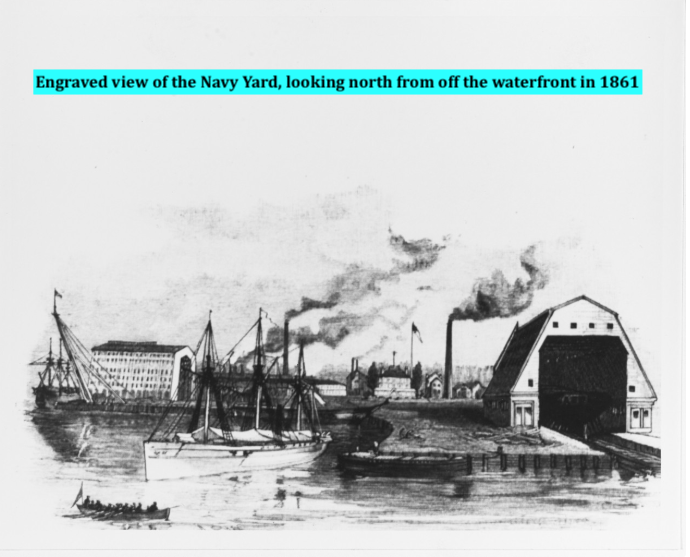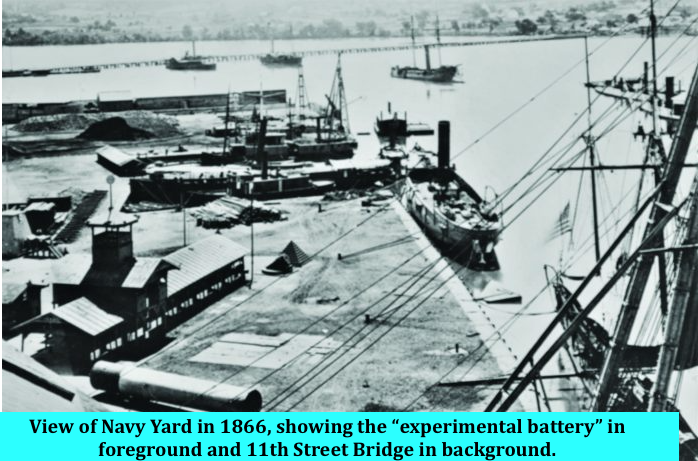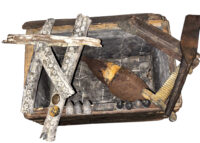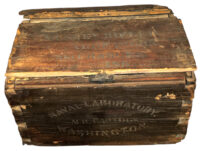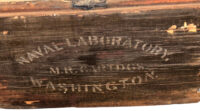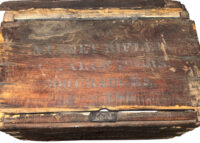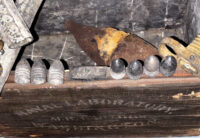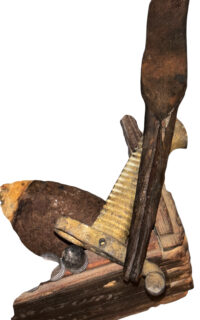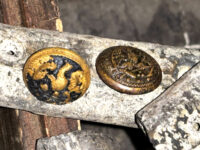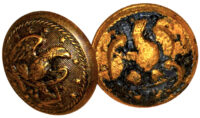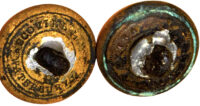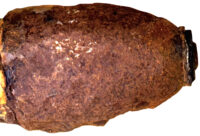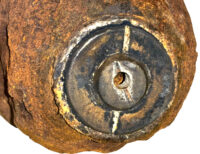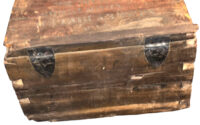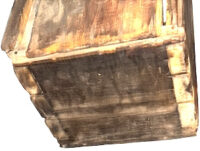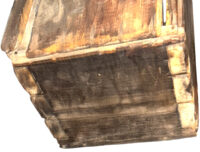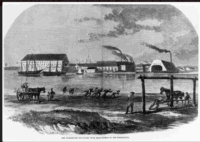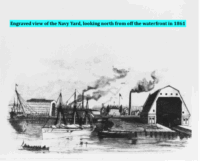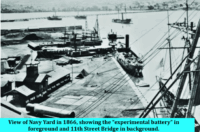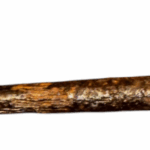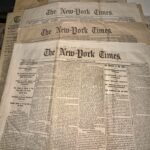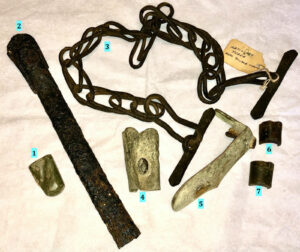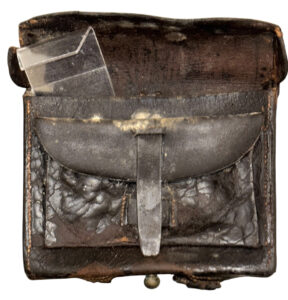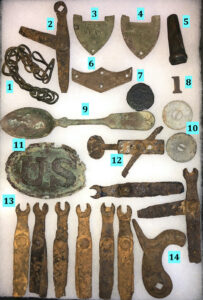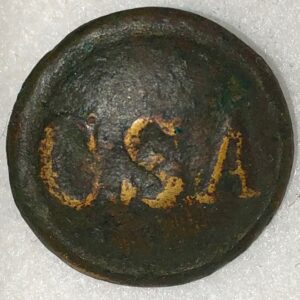Civil War Washington Naval Laboratory Box for .69 Cal. Cartridges Accompanied by Navy Cutlass Scabbard Sections, Seven .69 Cal. Rifle Bullets, Two USN Coat Buttons, a USN Boarding Pike Leather Cover, Brass Saber Bayonet Hilt and 12 lb. Schenkl Shell – All Discovered in the Potomac River in the 1960s
$1,100
Civil War Washington Naval Laboratory Box for .69 Cal. Cartridges Accompanied by Navy Cutlass Scabbard Sections, Seven .69 Cal. Rifle Bullets, Two USN Coat Buttons, a USN Boarding Pike Leather Cover, Brass Saber Bayonet Hilt and 12 lb. Schenkl Shell – All Discovered in the Potomac River in the 1960s – This grouping was a component of a significant relic and artifact collection that was created starting in the 1960s, that we just obtained. We are not sure of the exact location where this grouping was found, but it is most interesting – seemingly, all of the various artifacts were discovered in the same general area. As mentioned, the grouping includes: the actual Naval Laboratory wooden box, mostly intact, with dovetailed sides, stenciled front and top, with its original brass hinges and lock – remnants of the original paint remains, the brass screw lock assembly is intact – the box is stable, but needs to be handled carefully; three lengths of a heavily riveted, USN M1860 cutlass scabbard, part of which is still held within a segment of the wooden rack where it was stowed aboard a ship; seven .69 cal., three ring minie balls; two Civil War period, U.S. Navy coat buttons; a Civil War period, U.S. Navy boarding pike, tip scabbard; the ribbed, brass hilt of a war period, saber bayonet; a 12 lb. Schenkl shell, still fused (the shell has been disarmed) the shell is obviously a water find, with distinct water action on the iron. It is apparent that the various artifacts must have been covered with silt and hence remained in anaerobic conditions, thereby allowing all components to remain in good condition. This grouping is reminiscent of the various artifacts we have encountered that were discovered at City Point at the confluence of the Appomattox and James Rivers dropped into the water off of wharves that collapsed and supply ships that sank, after the Confederate sabotage explosion in 1864.
These crates were designed to hold 500 rounds of .69 Cal ammunition without percussion caps within the crate. The reason for not having caps in with the cartridges, comparable to army crates, was to add a safety measure for the musket ammunition which was destined to be stored in ship’s magazine, along with all the powder for the ship’s artillery.
Measurements of the Navy Laboratory Box: L – 14.25”; W – 9.25”; H – 8”
By the time of the Civil War, the Washington Navy Yard was well into its change to a heavy industrial facility. After the steam frigate Minnesota, launched in December 1855 and completed in May 1857, only one more significant ship would be fully constructed there, the gunboat Nipsic during 1873-79. The Navy Yard built and installed machinery for several ships during the 1860s, and continued to do ship repairs long after that, but its efforts were increasingly concentrated on ordnance manufacture and testing.
Though the waterfront area was still dominated by two big wooden ship houses, one oriented roughly east-west near the western end of the yard, and the other running north-south at the eastern end, many new buildings were erected to support ordnance manufacturing. Among these was an ornate foundry to the north of the western shiphouse, and nearby, the large brick “quadrangle”, measuring some 300 feet wide by 400 feet long. The latter is still in use and looks much as it did in the 1860s, though its interior and its purposes have been greatly changed.
Just inland from the waterfront, and east of the western shiphouse, a long shed-like structure was built to serve as an experimental gun battery. From it, guns could be fired down the Anacostia River, where points of impact could be precisely observed, allowing scientific testing of guns, gun propellants and projectiles at the ranges typical of Naval weapons in the muzzle-loading age.
Immediately south of the Commandant’s Office, a house-like structure about in the middle of the yard’s waterfront side, a semi-circular park was established to hold captured guns. Most of these weapons, trophies of the conflict with the Confederacy, remain on exhibition at the Navy Yard in the Twenty-First Century.
Also in front of the Commandant’s Office, but closer to the river, a large pile of coal was much in evidence, fuel for ships and for the furnaces and steam boilers of the yard’s industries. Among the factory buildings, tall smokestacks further attested to coal’s importance to “iron-age” industry.
